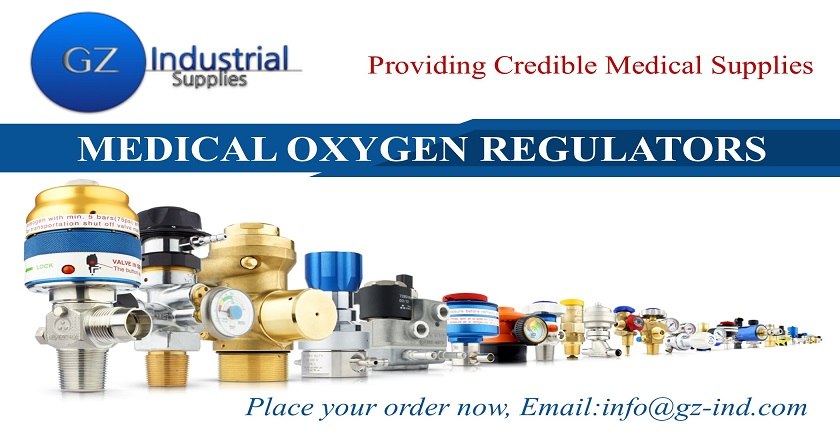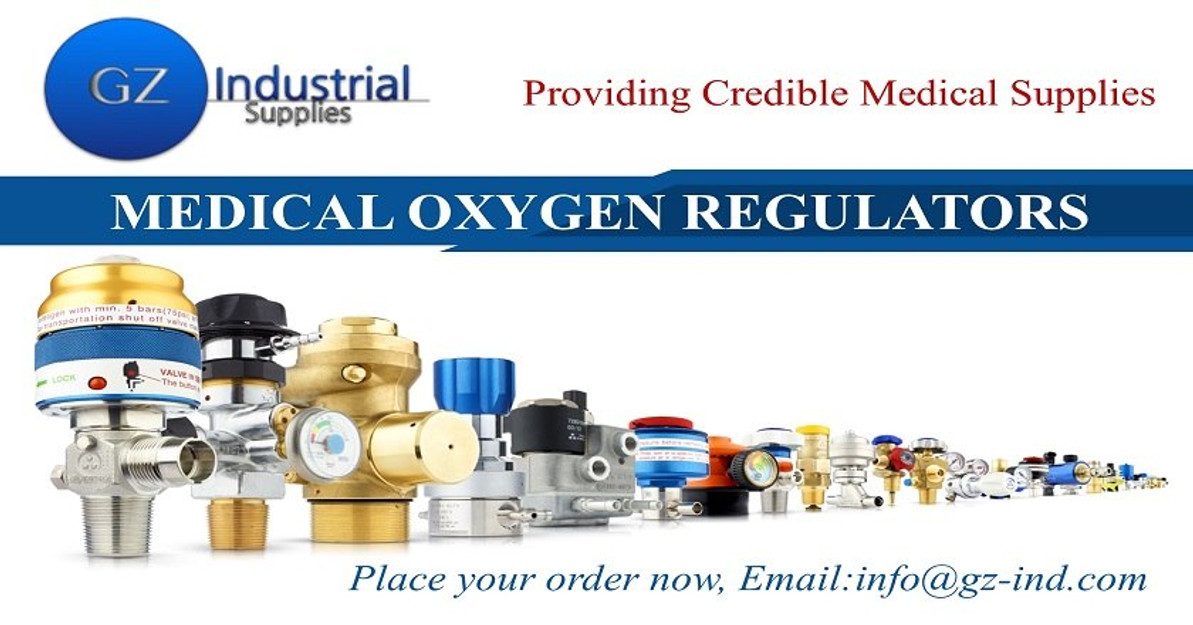MEDICAL OXYGEN REGULATOR

Medical oxygen regulators are precision devices which control oxygen pressures up to 2,000 and even 3,000 psig (per square inch gauge) and regulate this pressure to allow patients to receive the proper prescription of oxygen. Oxygen Conserving Devices and Regulators are pressure reducing devices designed to regulate or lower oxygen pressure from a cylinder to levels that can be safely used by the patient. A Regulator simply regulates the (free) flow from an oxygen cylinder.
Oxygen regulators come in different sizes and styles, so that they can fit the range of oxygen cylinders and delivery systems available. Some are compact enough to fit in the palm of your hand, while others are appropriate large oxygen delivery systems. Both pediatric and adult models are available.
HOW TO CHOOSE AN OXYGEN REGULATOR
Some oxygen regulators are considered to be of “high purity,” which as the name implies, are equipped with components to help protect the oxygen system from outside contaminants.
High purity regulators are sensitive to elements like moisture and other gases that may enter the system from the outside source, while the regulator is being attached or removed, or during the changing of oxygen canisters.
MAIN FEATURES OF OXYGEN REGULATORS
Three main features help to determine whether a regulator can be used for high purity applications:
- 1. Body Type. Regulator bodies are grouped into two types of construction: FORGED or BARSTOCK. Forged bodies are formed in a mold under high pressure while barstock bodies are made by shaping a single metal piece by machine. High purity regulators have barstock bodies. They have a smaller internal volume and so are easier when it comes to purging them of moisture and contaminants. Also, the metal grain of a barstock body is tighter, so fewer contaminants get in.
- 2. Diaphragm Material. The diaphragm in a regulator sets the pressure and can be made of either neoprene or stainless steel. For a high purity regulator, a stainless steel diaphragm is required.
- 3. Type of Seal. The seal between the diaphragm and body of the regulator is another barrier to impurities. A metal-to-metal seal is the most durable, and is used in high purity regulators. A high purity regulator will cost more than one for general use but provides more pure oxygen which is an advantage for people with severe breathing problems and/or allergic sensitivities.
- Asthma
- Chronic bronchitis
- Congestive heart failure
- Cystic fibrosis
- Emphysema
- Lung cancer
- Pneumonia
- Pulmonary fibrosis
- Sleep apnea
WHO NEEDS AN OXYGEN REGULATOR?
Any medical condition that compromises an individual’s ability to breathe independently - either temporarily or long-term - is grounds for the use of oxygen therapy and an oxygen regulator/oxygen conserving device.
Some conditions may include:
Actually, using an oxygen regulator or conserving device isn’t complicated, but needs to be done with care and attention. Oxygen under pressure can be explosive if not handled correctly.
HOW DO I SET UP MY OXYGEN REGULATOR?
Your regulator or conserving device will come with complete instructions. However, here are the basics:
- All regulators have CGA (Compressed Gas Association) fittings for connecting them to a cylinder. Each fitting has a numerical designation indicating the gas it can be used with. For example, this system prevents an oxygen regulator being used with a hydrogen cylinder.
- To attach a regulator to your oxygen cylinder, make sure the regulator and outlet valve are closed. Once the regulator is attached, slowly open the valve on the oxygen cylinder.
- Once the cylinder is opened, it’s time to check the pressure gauge. Low pressure could indicate a leaking valve, which would be dangerous. If there are no leaks, the outlet valve is opened and oxygen begins to flow.
Any person who uses medical oxygen at home will require an accompanying oxygen regulator. Therapeutic oxygen must be delivered at the optimal rate for the person and their condition as prescribed by a doctor. The regulator is what ensures that the flow is delivered according to prescription.
For more information about Medical Oxygen Regulator and other products, please visit our online shop https://www.gz-supplies.com/medical-oxygen-regulator/
Recent Posts
-
Press Release: Same Great Lube, Less Waste: Lubemax 50:50 makes the Switch to Sustainable Packaging
In a move towards environmental responsibility, Epoxy Oilserv Nigeria Limited is proud to announce t …Apr 23, 2024 -
Top 8 Generators Recommended by Professionals in Nigeria (Reviews)
Generators can keep your home or business running with your essential equipment until the power is b …Apr 23, 2024 -
Transformer Safety: Preventing and Managing Common Hazards
Transformers are critical components in the electrical distribution system, handling high volt …Apr 23, 2024



